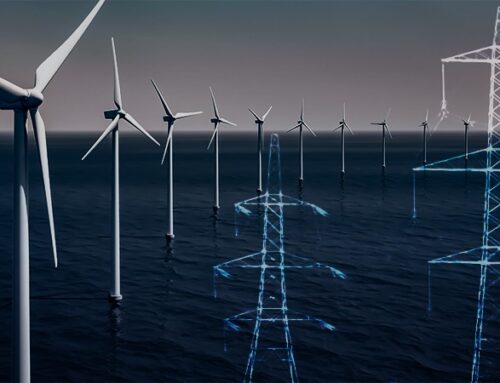Solar + storage, the combination of solar power and electricity storage, is seen by many as the Holy Grail of the energy markets and the key to a secure, low carbon future. However two recent reports provide conflicting views on whether this is a realistic prospect or simply another myth.
In its analysis, the Adam Smith Institute claims that variability, low load factors and intermittency mean the entire solar fleet will only contribute the same as an 882 MW CCGT, but at multiples of the cost. The report also says that the lifetime production of the current fleet could be matched in seven years by a 2.5 GW nuclear plant which would occupy far less space. The report found that neither storage not interconnectors could realistically act as backups for solar in the UK.
This is in contrast with a study by Aurora Energy which found that the cost of backing up solar generation and integrating it into the energy system was negligible, representing just 2% of the current cost of solar energy.
So what are the prospects for solar power in the U.K., and can the obvious challenges of relying on the sun in this notoriously grey climate with its long winter nights be economically met? Over the course of the next two blog posts I will try to unravel the different perspectives presented in these reports, and conclude whether solar + storage is indeed the solution to a sustainable low carbon energy system, or whether it is largely a myth.
Challenges of solar power
At the start of this decade there was very little solar in the UK, with just 65 MW installed across the country. The introduction of a generous feed-in-tariff in 2010 saw the start of a significant deployment with 1 GW added by 2011 and reaching 9.2 GW by the end of 2015. Current estimates suggest over 11 GW of solar is now installed in the UK.
| The report from the Adam Smith Institute examined the output of a model solar fleet with a capacity of 8.4 GW. According to the authors it was necessary to use model data as all solar generation currently on the system is connected to distribution networks and so only aggregated data are available due to lack of half-hourly metering. Ten years of historic weather data was used to estimate production levels, variability and intermittency. The annual average load factor for the model fleet was just 9% when new, falling to 7% at the end of a panel’s 25-year life. Production would be particularly low in winter when demand is highest, with load factors falling to 3.6% in December. |  |
Output was also found to be highly intermittent, dropping below 10% of installed capacity for nearly 5,800 hours (35 weeks) each year, and only exceeding 60% for 7 hours.
The study considered three potential solutions to the intermittency problem, concluding:
- Pumped storage is currently the most cost-effective solution for large-scale energy storage, but the cost and environmental impact make it unlikely enough new sites in the UK would be developed;
- Battery storage on the same scale would be even more expensive and would require frequent replacement;
- Interconnectors bringing renewable energy from Northern Europe would be ineffective as weather patterns are similar to the UK.
Overall, the authors concluded:
“With the energy storage technology available for the foreseeable future, no combination of wind and solar energy with backup storage would be suitable to supply a significant proportion of grid electricity without full conventional backup being available.”
The report did however see a role for solar in the context of domestic water and space heating, following successful installations in New Zealand.
A number of commentators have questioned the Institute’s focus on load factors. Load factors measure the amount of energy generated versus the maximum possible, and it’s obvious that as solar cannot generate at night load factors would be negatively impacted. A more reasonable measure would be to define the maximum generation in terms of annual daylight hours.
A back-of-the envelope calculation of the average number of hours of sunlight using data from Project Britain shows that there are approximately 4,493 hours of sunlight per year and 4,267 hours of darkness so most of the 5,800 hours of low production found from the Adam Smith Institute’s model occur during the night. Night-time demand is not zero, so the fact that solar power makes no contribution during those hours means that this capacity needs to be replaced by either other forms of generation or some form of storage.
The low load factors make for some overly-dramatic headlines, but the underlying point is that renewable energy is intermittent, produces less at times of high demand, and also provides no inertia to the system – something mentioned in the report but not the headlines. This is not really in dispute, but the question is whether these deficiencies can be met through use of storage.
Storage alternatives
Currently the largest scale available storage mechanism for electricity (excluding raw fuel storage) is pumped hydro. This is a well-established technology that can be deployed at scale (the UK is home the Europe’s largest pumped hydro facility, the Dinorwig 1800 MW plant in Wales), however current consensus is that construction of new facilities on this scale in the UK is challenging due to the high upfront costs and long pay-back periods versus the length of market contracts available.
Other possibilities include compressed air storage, and thermal storage, but both of these technologies are still in their infancy. This leaves the much vaunted battery alternatives. Batteries are being considered as both gird-level solutions and in behind-the-meter, domestic settings.
On the grid, side there is currently very little battery storage capacity, although a number of new projects are coming forward as a result of the recent EFR auctions. A number of challenges exist around the economics of such projects which need to be addressed before meaningful development can take place.
 | Domestic storage is also taking off with a range of products now available from the likes of Tesla, and car manufacturers increasingly see this as a natural fit with electric vehicle technologies, being an ideal second use for EV batteries. However, current battery technologies lack the capacity to power high consumption appliances and would typically discharge in about two minutes if used to run an electric hob or power shower. |
In other words, current technology does not enable householders to disconnect from the electricity grid using only a combination of solar panels and battery storage.
Not only are most storage technologies immature, there is also far too little of it currently to provide meaningful back-up to renewable generation. An analysis from Energy Matters blog states that:
“installed world battery + CAES + flywheel + thermal + other storage capacity amounts to only about 12 GWh, enough to fill global electricity demand for all of fifteen seconds. Total global storage capacity with pumped hydro added works out to about 500 only GWh, enough to fill global electricity demand for all of ten minutes.”
In my next post I will look in more detail at the Aurora report and whether it is feasible to build-out the amount of storage needed to back-up solar power without reliance on other sources of generation.
| Sidebar on costs Various analysts have calculated that solar panel costs fall by about 20% for every doubling of installations, meaning that grid-parity ie the cost at which solar power equals the weighted average costs of all other sources of generation on the system, is feasible.  Analogies are drawn with Moore’s Law in the semi-conductors world where the number of transistors in a microprocessor chip doubled about every two years…essentially an exponential improvement. Unfortunately, this relationship is now breaking down, which suggests that the exponential growth phase is not sustainable. This blog explains why an “s-curve” theory is more likely to explain the progress in the costs both of solar panels and battery storage, drawing parallels with a number of other successful technologies. |






Leave A Comment